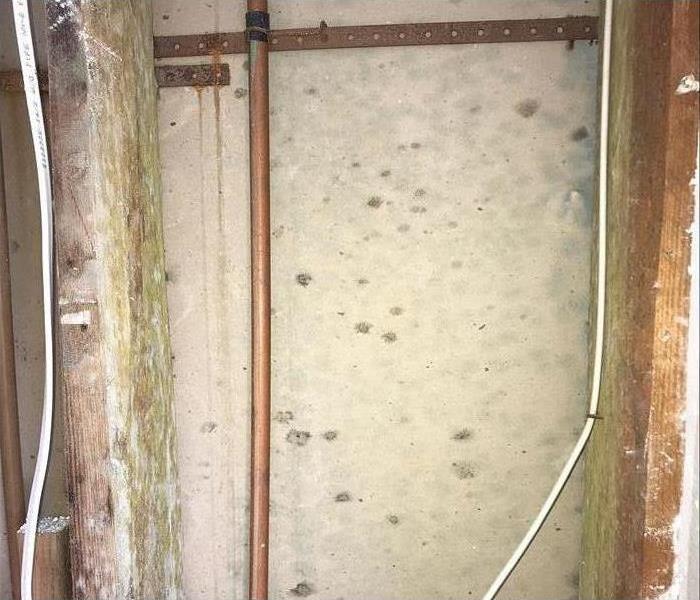How Do I Get Rid of Mold Damage?
12/5/2022 (Permalink)
How Do I Get Rid of Mold Damage?
Mold is a type of fungus that grows in warm, damp environments. If you see mold or suspect it's present in your home or workplace, you should take action to get rid of it. This article explains how to assess and remove mold safely.
Choose a remediation contractor.
Once you've identified the extent of your mold damage, you'll need to choose a contractor to remove it. If possible, hire someone who has been in business for several years and can provide references from customers they've worked with. Ask these references about their experience and whether they would hire this company again. Also ask if the company owner was present during all stages of the job, as well as if they have certification in environmental science or other areas related to mold remediation (such as building construction). It's also wise to get proof that your chosen company has insurance coverage in case anything goes wrong during their work on your property.
Remediation work plan.
A remediation work plan describes the work to be done, the equipment and materials to be used, and procedures to be followed. It should include:
- A detailed description of the problem area(s)
- Steps for containing the mold
- Steps for removing mold from building materials and furnishings (if applicable)
- Procedures for cleaning up after removing mold (e.g., disposing of waste materials).
Personal protective equipment (PPE)
The use of Personal Protective Equipment (PPE) is required when dealing with mold. PPE for individuals includes a respirator, gloves, and goggles. A respirator can be useful when handling moldy materials, but it is not required by OSHA now. Gloves should be worn any time that you are handling contaminated materials because even healthy people can become ill from exposure to molds. Goggles or glasses should always be worn when working with moldy materials as they will protect your eyes from any airborne spores that may be released into the air during cleaning and removal.
Containment
Containment is a crucial step in the mold removal process. If you don't contain the mold, then it can easily spread to other areas of your home and cause more damage than necessary. Containing the mold means keeping it from spreading while you work on removing it. You can use barriers (like plastic sheeting) to keep the mold confined to one area, or you can remove items that have been affected by moisture and put them into another room until they are cleaned and disinfected.
If you decide to use plastic sheeting for containment purposes, make sure that there are no holes in between pieces of plastic so that air doesn't get through them as well! Cover all surfaces affected by moisture with heavy-duty plastic sheeting.
Mold removal
Mold removal is a multi-step process, but it doesn't have to be overly complicated. For example, if you find mold growing in your bathroom, you should use a HEPA vacuum to remove as much of the mold spores as possible. Next, scrub the affected area with a brush dipped in soap and water. Use an all-purpose cleaner if you want to make sure that no mold remains after scrubbing. You can also use a commercial product designed specifically for removing mold from surfaces like drywall and cement board - these products are available at hardware stores or online retailers such as Amazon.
Disinfectants and antimicrobials
Disinfectants and antimicrobials are often used to kill mold and mildew. However, they are not effective against mold spores. Therefore, it is important for you to use these treatments properly to avoid any potential health hazards that could be caused by their misuse.
The main difference between disinfectants and antimicrobials is how long they remain active after being applied. Disinfectants kill most microorganisms within a short period of time (usually 30 minutes), while antimicrobials only slow down growth of some types of molds (such as Aspergillus) but not all types—particularly those that produce black colony growth.
Be sure you hire reputable professionals, take precautions, and follow your remediation plan.
Mold removal can be an intimidating process. It’s important to remember that you don’t have to do it alone.
We recommend hiring a professional with experience in mold remediation and EPA approval, but there are other important things to look for as well:
- The contractor should have experience in the area where you live (for example, if you live on the coast, your contractor should be familiar with flooding).
- If possible, work with someone who has experience in your type of building (for instance if you live in an old house or trailer).
Mold is a natural part of the world around us. It’s important to know that you can protect yourself from mold and mold damage. If you do find mold in your home, be sure to contact a professional for help in removing it. The EPA has put together some great resources on how to remove mold from your home safely, but if you still have concerns about what to do next then please contact us today! We will answer any questions or concerns that may arise during this process and make sure everything goes smoothly!






 24/7 Emergency Service
24/7 Emergency Service
